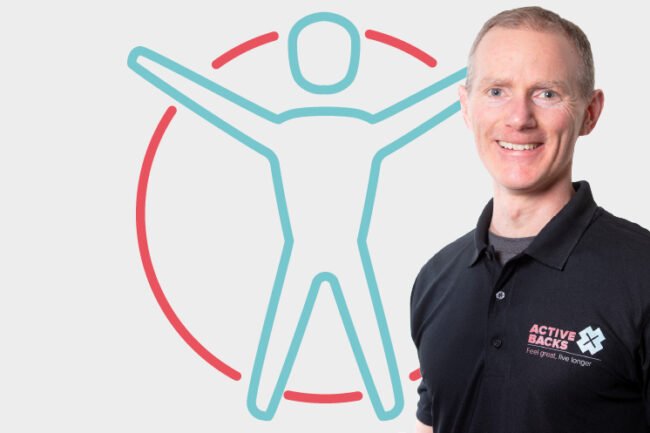Low back pain / sciatica and lifestyle
Low back pain / sciatica and lifestyle
This episode is entitled “Low back pain / sciatica and lifestyle”, and it will explain how these two are related. The main factors are:
- Physical inactivity
- Smoking and low back pain / sciatica
- Overweight
- Work-related stress
- Loading

How is lifestyle related to low back pain / sciatica related?
Lower back pain / sciatica is almost entirely related to lifestyle. People often say “lower back pain runs in my family”, when in reality, lower back pain runs in the human race, or at least it has for the last many decades, probably a hundred years. Lifestyle is a huge factor, very much the main factor contributing to your lower back pain / sciatica. It isn’t just bad luck, it comes as a direct consequence of the things that you do daily.
Physical inactivity
People with a low level of physical activity get higher rates of lower back pain. And people who have been fairly active get more lower back pain when their activity levels decrease. People were laid up for quite a while, unable to work because of the Coronavirus. In Scotland we are just recently coming out of a full-scale lockdown. Most people are fine while they’re off work, but when they go back, because of the lack of physical activity of when they were off work, they get a flare up of recurring lower back pain. Going back to work is the trigger, but that would not have happened if he hadn’t had the layoff in the first place.
Smoking and low back pain / sciatica
Smoking is a risk for a lot of health issues. It’s not just a risk factor for lower back pain, but also for a number of pain syndromes. This is because smoking is bad for circulation. And because your circulation is poor, a tissue is slower to heal and therefore the pain is more protracted. Tissues don’t heal as well when your fundamental metabolism is unhealthy. Also, smoking carries a number of chemicals that are pro-inflammatory that cause more inflammation in your system.
Overweight
Some people are more prone to being overweight for metabolic, endocrinological or hormonal reasons, but for most people it’s a lifestyle issue. If you are moderately overweight, you’re at risk of having prolonged lower back pain / sciatica, so it will last longer. And if you are significantly overweight or obese, you’re definitely at more risk of developing lower back pain / sciatica.
Work related stress
Stress in general is a lifestyle factor, but specifically work-related stress seems to be worse for lower back pain / sciatica. When we talk about work-related stress, we’re not talking about the physical elements of work, but the psychological and relationship aspects to it. People who find their works stressfull tend to get more lower back pain / sciatica.
Loading
Loading is sort of a cousin of physical inactivity. There are three types of loading: if you lift heavy stuff, you dig the roads for a living, or you do a lot of heavy gardening, you are exposed to peak loading. Then we have cumulative loading, which is more modest, but you do it repetitively. And then we have sustained loading, where you stay in one position for a prolonged period of time.
Look at your life critically and try and think through all the things you do in a day, or in a week. Are you doing anything that exposes you to loading? You can be exposed to all three types of loading, and it doesn’t mean you’re going to develop lower back pain. Try and judge how used you are to that level of loading. Have you built it up gradually over a long period of time or have you gone from zero to hero? The rate of change is really important when it comes to injury risk.
During lockdown, people did a lot of things they wouldn’t normally do, and they stopped doing a lot of things they normally would. This transition is definitely a dangerous period. If you haven’t been sitting in your office chair very much and now you’re going back to doing it, try and make the transition gradually. Practice on the dining chair at home before you go back to work, and gradually build up that seated related loading. Don’t go from an hour of sitting a day in that position to eight hours a day. That’s a recipe for injury.


